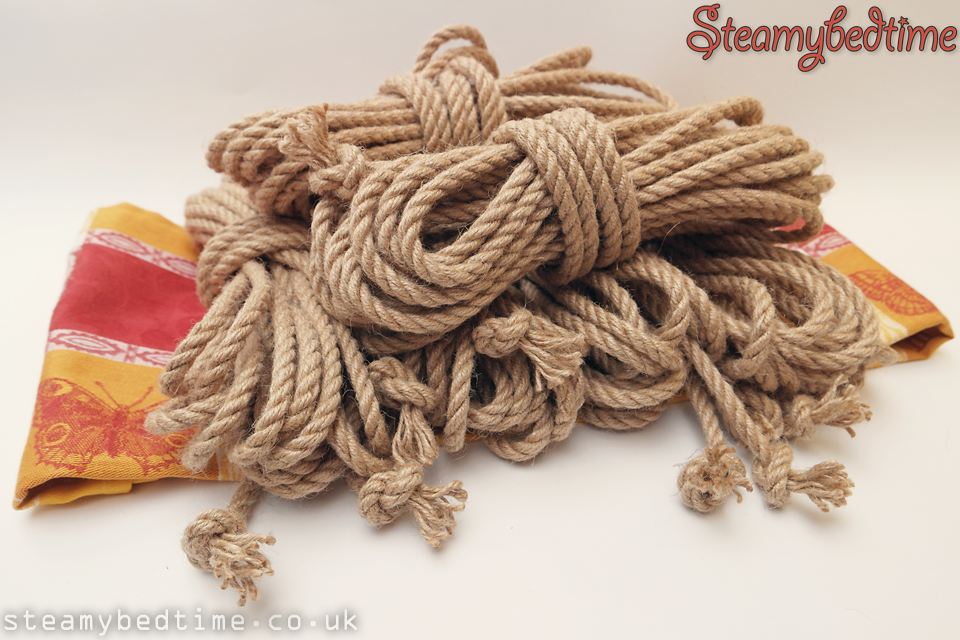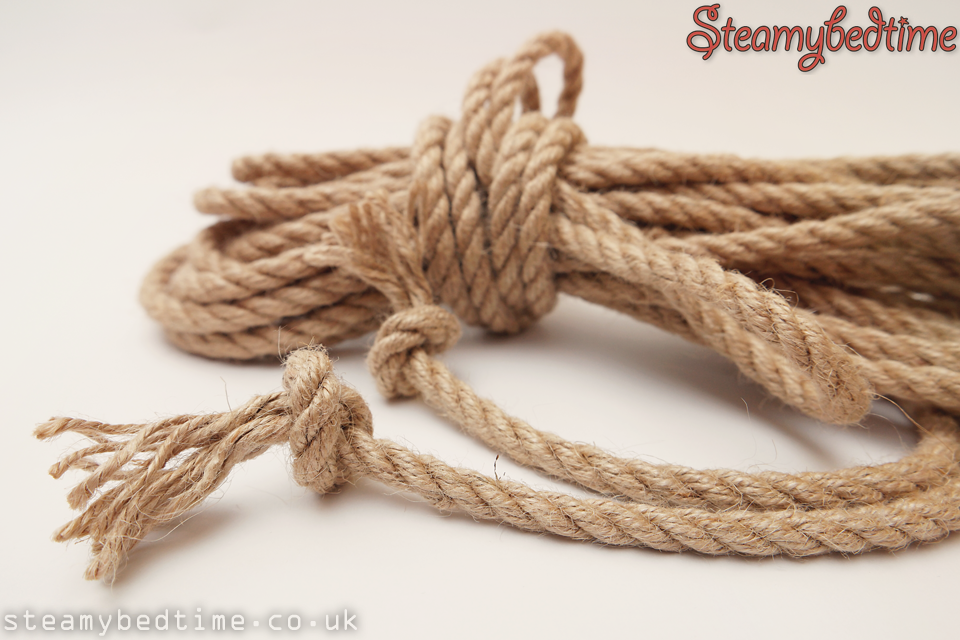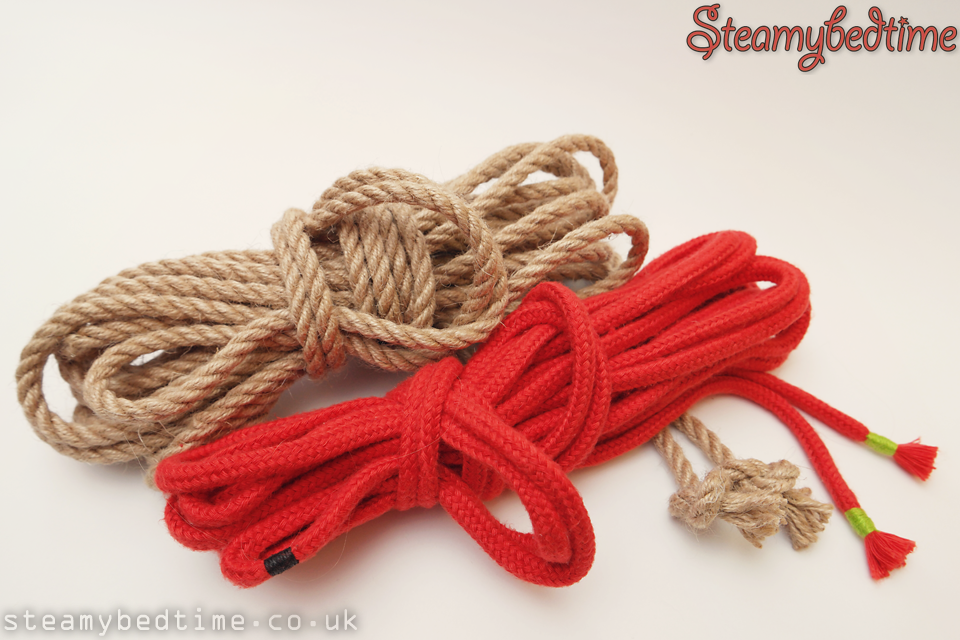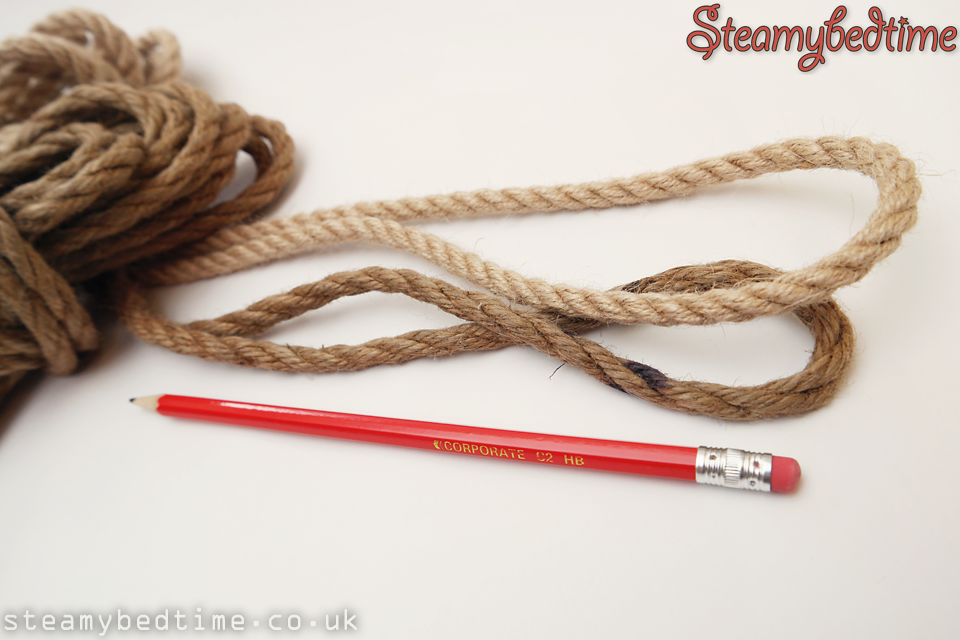This is a brief initial review of the Okinawa Jute rope. We'll be adding some additional articles describing our approach to treating the rope, and some first impressions, but it seemed like it would be nice to get some photographs of the brand new and untreated rope. Plus we'll fill in a little of the back story, explaining how we arrived at this point.
There's now a follow up to this article where we carry out a rope treatment, and then try them out: Preparation of Okinawa Jute Rope

We decided on a set of six ropes in the hope this would give us all the flexibility we need as fledgling adventurers in the fine art of kinbaku.
As a starting point we currently own three related books: Chanta Rose's Bondage for Sex Volume One (which sadly seems to have gone out of print) and the two Lee Harrington books Shibari You Can Use and More Shibari You Can Use. Strictly speaking, perhaps they are not altogether true to the traditional Japanese style, but the Chanta Rose book is a particular favourite. As the name suggests, the positions are conceived to be functional as well as decorative. This is a book for couples who want comfortable bondage that's great for sex! (Don't we all.) The Lee Harrington books are really good too, but quite different, leaning towards creating erotic intimacy through rope.
Online, we're looking into Esinem's Shibari Classes website, which looks to have a pretty good mix of courses, several of which feel quite approachable to us as beginners. And, with all of these resources, between four to six ropes seems to be enough to complete even the more complex tutorials.
We'd have to confess to not being too fond of the larks head knot, which features heavily in the Chanta Rose book. Maybe it's just an aesthetic point of view, but it seems like a knot which can often become rather unsightly and we're looking for beauty in the rope work. Like a good recipe book though, there can be inspiration even if you choose to slightly adjust the ingredients.

Our package arrived promptly by recorded delivery, despite any effect of the Christmas posting rush. All nicely packed and discreet; a white plastic outer envelope with a bubble-wrap lining.
Our motivation for trying out a better quality and more traditional rope was twofold. Partly a desire to experiment and learn more about the erotic art of kinbaku, and also from a sense of frustration with our existing cotton ropes which, in all but the simplest of uses we've tended to find their softness and elasticity can lead to problems.

The photograph above shows one of our Bondage Boutique Soft Cotton Ropes from Lovehoney; we bought five and cut a couple of them into shorter lengths. (The green end whipping indicates this is a rope we cut down to 6m; it's shorter 4m counterparts being marked with blue whipping.) These are ostensibly 10m long, 10mm braided cotton ropes, compared to the 8m long, 6mm Okinawa, but the "10mm" may not be entirely accurate as they feel like a fairly similar diameter.
The Bondage Boutique Rope is perfectly fine, and we've had plenty of fun with it. It's soft, very flexible, stretchy - but still easy to knot. It looks great and feels pretty comfortable, most of the time. We chose to mark the centre with some black twine and add nicer end whippings, but really it needs no preparation. To anyone seeking quick and simple results, we'd have no hesitation recommending it.
But having said all that, its main failing is exactly that soft stretchiness we describe above. You can feel it happening, even when handling a short length for a simple tie. If there's too much tension in the rope as you make a few wraps and tie off, it then feels like it's squeezing and should have been tied more loosely, but it's not all that easy to judge. The Okinawa definitely doesn't exhibit this stretching problem, and the same can probably be said for all good quality jute and hemp ropes.

With a pencil providing scale, the photo above shows an old, lightly waxed and oiled jute rope, alongside the brand new Okinawa. To be perfectly honest, the older rope is rather cheap, not all that good quality (purchased from a craft shop) and its fairly loose lay is almost irretrievably out of balance. Shown here for reference, it serves to highlight just how clean and consistent the new rope is.
Whilst it's obviously too early for us to form any final conclusions, what we can say is that we're really pleased with the appearance and quality of the Okinawa. As relative newcomers to jute, we were slightly unprepared for how stiff it initially felt, but everything we've read suggests that it will quickly soften up with use, and with some careful treatment. Is that true? Well, our next step is to enjoy finding out!







